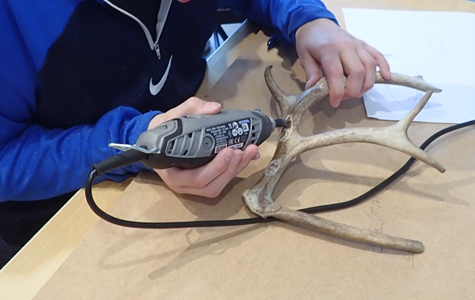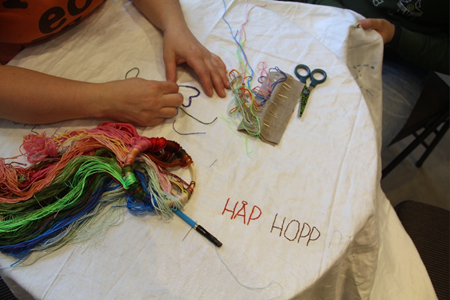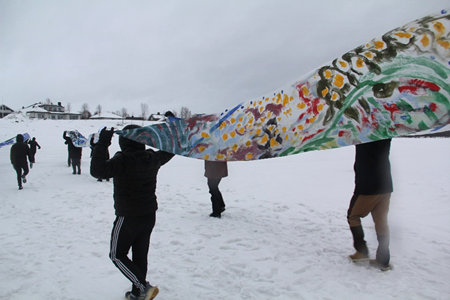AAE is coordinated by the University of Lapland and it utilizes the Nomadic Hub of Arctic Art Education as a key tool for working with the North and the Arctic.
For the researchers, artists and teachers from the participating circumpolar universities, this initiative serves as a platform for the development and research of Arctic art education. For the university students, it is an international course that begins with distance learning and culminates in on-site fieldwork as an artistic activity. In addition to the universities, a cross-sectoral partners contribute their expertise to support the academic collaboration. This adaptable event, tailored to situations and community needs, is held annually in different locations across the Arctic and northern regions.

Photo: Timo Jokela
"Working with communities is valuable because it helps to understand ways of knowing in Northern eco-cultural contexts, whereby encounters can lead to new understandings not only in art, but also in the pursuit of sustainability transitions", states the project leader, Professor Timo Jokela, UArctic Chair in Arctic Art, Design and Culture.
The events offer local residents the opportunity to experience contemporary art methods and participate in creating works and pop-up exhibitions resulting from the events.
"The central goal is to integrate diverse and creative working methods of contemporary art with the tradition of northern knowledge and skills in a sustainable manner in the spirit of New Genre Arctic Art", Jokela continues.

Photo: Timo Jokela
In Karajok, in the Sami region of Norway, the key local partners for the AAE were the Sami Centre for Contemporary Art (Sámi Dáiddaguovddáš) and the Karasjok School. In addition to the University of Lapland, the event was also supported by Umeå University from Sweden, Nord University from Norway and the University of Greenland. External partners included the multidisciplinary arts association Piste from Rovaniemi and the artist and social psychology association Siunissag from Greenland.

Photo: Timo Jokela
The Karasjok Nomadic Hub of Arctic Art Education was made possible through funding from Nordplus Horizontal 2023 and the University of Arctic's research and education network fund, supported by the Danish Ministry of Higher Education and Science.
